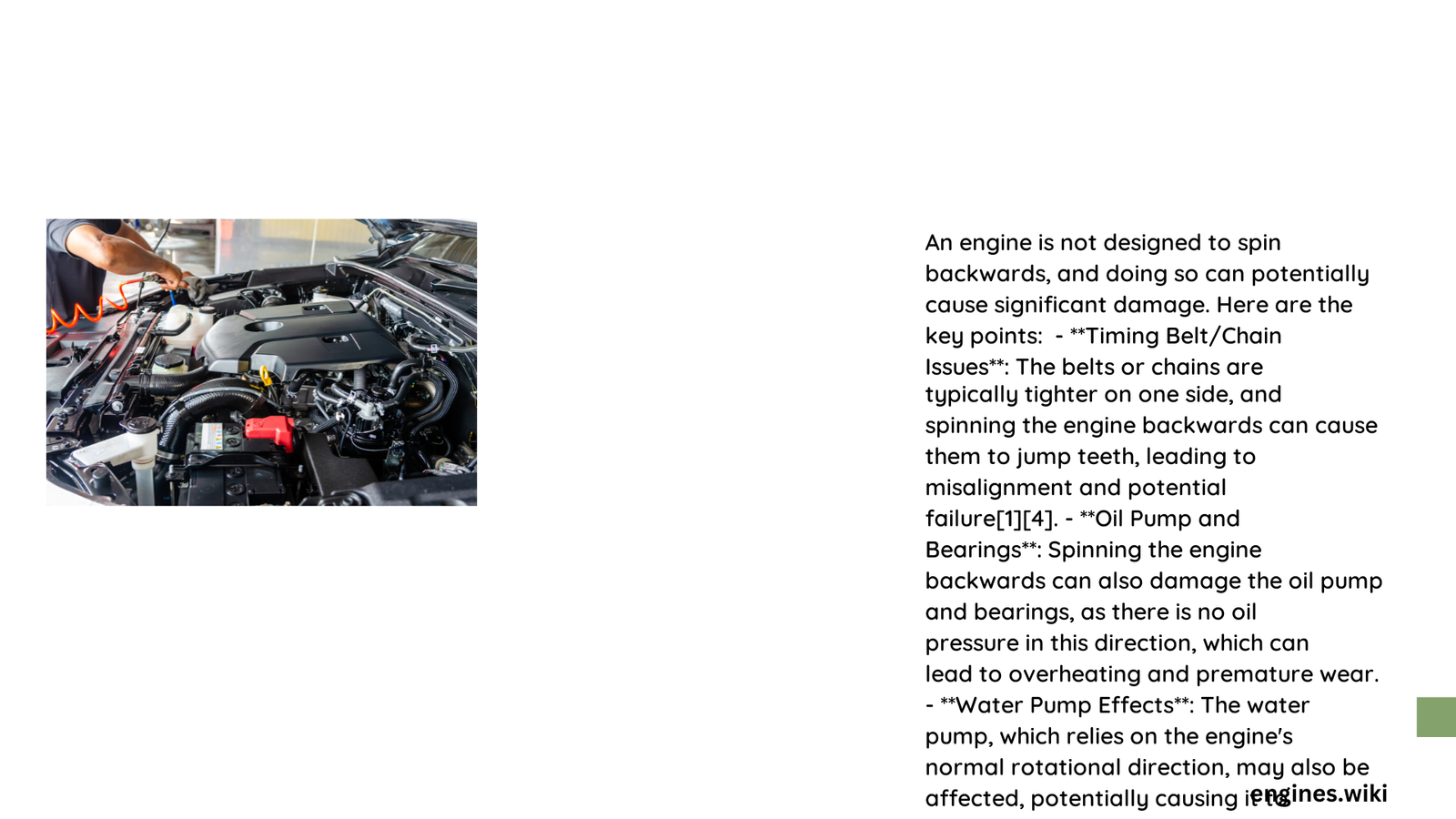Can an Engine Spin Backwards? Technical Insights and Mechanical Constraints
Vehicle engines are precision-engineered machines designed for unidirectional rotation. While technically possible with extensive modifications, standard internal combustion engines cannot naturally spin backwards without significant structural and mechanical alterations. The complex interplay of components like camshafts, timing systems, and valve mechanisms creates fundamental barriers to reverse rotation, making it impractical and potentially destructive for most automotive powerplants.
What Prevents Standard Engines from Spinning in Reverse?
Numerous mechanical and design limitations prevent internal combustion engines from spinning backwards:
- Valve Timing Complexity
- Camshafts operate valves in a specific sequence
- Reverse rotation disrupts intake and exhaust valve operations
-
Incorrect valve timing leads to combustion failures
-
Structural Design Constraints
- Crankshaft geometries optimize forward rotation
- Connecting rod angles are engineered for unidirectional movement
- Reverse rotation creates abnormal stress distributions
How Do Mechanical Components React to Reverse Rotation?
| Component | Forward Rotation | Reverse Rotation |
|---|---|---|
| Timing Chain | Optimal Tension | Potential Slippage |
| Valve Mechanism | Synchronized Operation | Desynchronized Timing |
| Oil Seals | Designed Directional Flow | Potential Leakage |
| Piston Movement | Engineered Power Stroke | Inefficient Compression |
What Technical Modifications Enable Reverse Engine Rotation?
Achieving reverse rotation requires comprehensive engineering interventions:
- Redesigned camshaft with reverse-cut lobes
- Modified distributor and ignition timing
- Specialized crank seals accommodating reversed oil flow
- Reconfigured piston and connecting rod orientations
- Comprehensive computational fluid dynamics modeling
Why Would Someone Want an Engine to Spin Backwards?
Potential scenarios include:
- Specialized marine propulsion systems
- Experimental automotive engineering research
- Unique industrial machinery applications
- Academic mechanical engineering studies
What Performance Consequences Emerge from Reverse Rotation?
Critical performance implications include:
- Dramatically reduced torque output
- Significantly decreased fuel efficiency
- Accelerated component wear
- Potential catastrophic mechanical failure
- Increased maintenance requirements
Can Modern Computer-Aided Design Simulate Reverse Rotation?
Advanced simulation technologies enable engineers to:
- Model complex rotational dynamics
- Predict potential mechanical stress points
- Evaluate component interactions
- Develop theoretical reverse-rotation configurations
Practical Limitations and Real-World Challenges
Implementing reverse rotation involves:
- Extraordinary engineering expenses
- Limited practical applications
- Complex parts procurement
- Extensive testing and validation processes
Conclusion: Technical Feasibility vs. Practical Implementation
While theoretically possible, reverse engine rotation remains a highly specialized and rarely pursued engineering challenge. The intricate design of modern internal combustion engines fundamentally prioritizes unidirectional rotation for optimal performance and reliability.
References:
- SAE Technical Paper on Engine Rotation Dynamics
- Automotive Engineering Journal – Rotational Mechanics
- Mechanical Design International Research Publication
Note: This exploration demonstrates the complex engineering principles governing engine mechanics, highlighting the sophisticated design considerations that make reverse rotation an exceptional rather than standard phenomenon.

